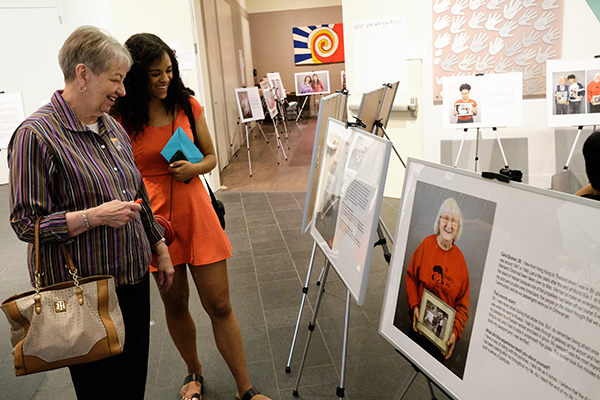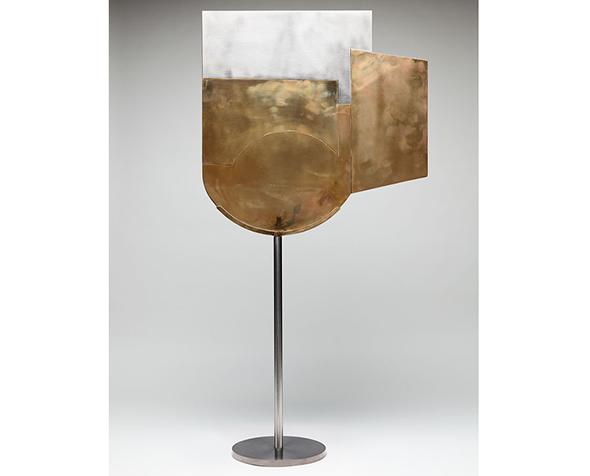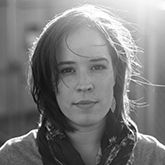Intergenerational Connections Through Photography
In Roddy MacInnes's courses, students use photography as a medium to study life itself. "The students in my classes are told that 'life' is their major field of study, and that art, biology, business, etc. are simply lenses they can apply to engage with life."
This approach led MacInnes to create "Photography and Memory," a project that pairs Intro to Photography undergraduates in the School of Art and Art History with Denver community members experiencing memory loss. The idea is to "use family photographs as catalysts for sharing life stories," MacInnes explains.
Over the Spring 2019 quarter, this project has brought together many members of the University and Denver communities. MacInnes first worked with Dr. Lotta Granholm Bentley, the Director of DU's Knoebel Institute for Healthy Aging, and Rachel Cohen who runs Knoebel's LinkAGES program, which addresses issues of social isolation. He also partnered with the Denver Art Museum's Creative Aging Forum, where he is an active participant.
"Without my collaborators it would not have been possible to reach so many community organizations and members," MacInnes emphasizes.
The project came to life with the help of librarian Amy DelPo, who works with the Denver Public Library and organizes the Memory Café, a group where people experiencing memory loss can find support and social connection. Anne Walker, an independent writing coach and editor, finished out the team.
MacInnes explains his role as one of initiating collaborations, then letting students and community members jump into the process of gathering photographs and sharing stories. "I believe it is important to engage our students with the community which they are members of and to emphasize that they can make a positive contribution to society."
The photography students were paired with a community member, and each person brought in a photograph that captured something deeply meaningful in their life. The students created portraits of the participants with their photos, then interviewed them and got to know the story behind their images.
Photography student Roxana Hu commented on the experience saying, "Behind a family photo, there's almost always a series of stories, whether they're happy or sad, sweet or bitter, amongst many other contrasts. [My community partners] led wonderful lives and continue to live each day to the fullest. I'm glad to have gotten to know [them]."
The project allowed all participants to find connection across generations, express themselves through visual and written mediums, and share stories among people with a wide range of life experiences.
"Getting students out of the classroom bubble, and even the university bubble, to engage with the world is my primary objective when conducting community outreach projects," said MacInnes.
And this type of work extends much further than a quarter-long project for MacInnes, who considers himself an autobiographical photographer and has been documenting his life through photography for four decades.
"The project got started as a consequence of a book project, Family Album , based on the discovery of photographs taken by a North Dakota woman in 1917. I found her photos in a Denver antiques mall."
MacInnes continues, "The book celebrates the intersection of my family album and the North Dakota woman's family album, and family photography in general. As a means of engaging my photography class with the community, I decided to incorporate what I learned from the book project into the classroom. I've included this approach with approximately 10 classes now."
Photographs from the project were collected into a book, which was given to each participant. Images from the book, and more information on the project, can be found on Denver's 9News story "It's About Love."







